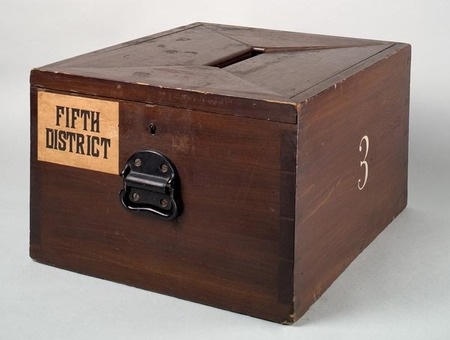PTA Hopes To Make Parcel Taxes Easier To Pass
Comments (1)

The CA PTA hopes to bring its plan before voters in November. (Creative Commons)
The $100 parcel tax the Los Angeles Unified School District (LAUSD) voted to put on the June ballot will need a 66 percent "yes" vote to pass, a stark reminder of the two-thirds majority required to pass any parcel tax in California.
But that threshold may soon change, igniting a sea of controversy.
The California Parent Teacher's Association (PTA) hopes to lower the threshold through its proposed Improve School Funding initiative, which it will try to get on the November 2010 ballot. If successful local communities could pass a parcel tax, a flat tax on each parcel of land, with 55 percent of the vote as long as the revenue be used for education.
"We believe this is the right time for the initiative," said Joe Ross, President of the California PTA. "In light of the massive funding cuts, it's time communities be given the opportunity to tax themselves for the sake of saving education."
Ross thinks lowering the threshold will enable communities of a lower socio-economic level to pass parcel taxes, since less money and campaigning will be needed.
"It takes a lot of time and energy to pass ballot initiatives; our proposal will make them more accessible," said Ross.
California PTA has started gathering signatures to put the initiative on the ballot and with their 4,000 members, hopes to gather all the signatures using only their volunteers. They say they plan to "make history" by being the first group to put an initiative on the ballot without paying professional signature gatherers.
"It's truly grassroots," said Ross.
Although not using professional signature gatherers may be new to California politics, trying to lower the parcel tax threshold is not.
State Sen. Joe Simitian (D-Palo Alto) has put forward several similar constitutional amendments, the most recent one being Senate Constitution Amendment (SCA) 6.
Proponents of measures like the Improve School Funding initiative and SCA 6 say measures like theirs would provide more local autonomy, as the tax revenue stays in the communities that pass the parcel tax, and help remedy recent state funding cuts to education.
Adversaries, however, say revenue raising is not the problem.
"If you're a Democrat, you raise taxes and spend. If you're a Republican, you swipe the credit card and spend." said Jerry Amanate, Mayor of Tustin and longtime Orange County Republican.
"Now we need discipline. We need to see what our income is and save some dollars."
Groups like the Howard Jarvis Taxpayers Association (HJTA) also see measures like SCA 6 as a way to undermine prop. 13, which originally instituted the two-thirds rule on tax raising proposals.
"These constitutional protections are now being threatened by legislators whose sole focus is to appease the spend-happy special interests that got them elected, not the already heavily taxed constituents they were elected to serve," wrote Jon Coupla, president of HJTA, on the organization's website.
HJTA also opposes how the parcel tax works, calling it "discriminatory," because it allows a majority, renters, to make a minority, property owners, pay more taxes. Others argue parcel taxes are discriminatory because they impose a flat rate no matter the individual's income.
"So if you're a senior citizen on a limited income and/or you bought your house forty years ago you pay the same tax as a billionaire," said Bonnie Moss, who supports lowering the threshold, is Vice President and COO of Tramutola, a political consulting group.
If the threshold were lowered, it would mean a lot more parcel taxes. From 1983 to 2009, 54 percent of parcel taxes met the 66 percent threshold, according to Ed Source, a non-profit organization that gathers and analyzes data related to education in California. If the threshold had been 55 percent, 87 percent of the parcel taxes would succeeded.
Lowering the threshold may have a chance through the initiative process. Voters passed prop. 39 in 2000, for example, which lowered the school bond threshold to 55 percent.
As the threshold stands now, most of the districts that pass parcels taxes have been relatively affluent. About 90 percent of the elections were held in districts below the state average of 49% low-income students, according to Ed Source.
"These communities understand the relationship between quality schools, high property values and quality of life," said Moss. "More also tend to be in [Northern California] because they have a more supportive electorate and more Democrats."
But Irvine school board member Galvin Fenner, who supports lowering the threshold, points out, "Lowering the threshold could eventually run into conflict with the Serrano vs. Priest court decision."
The decision declared property taxes as an unfair way to fund schools because districts with low-income property cannot raise enough revenue to fund their schools, creating vast funding inequalities between poor and affluent districts.
State Sen. Joe Simitian's office refused to comment on the issue, and the Calfornia PTA said it had not thought about the possible conflict with Serrano v. Priest.
"For us it's about fostering more local control over our neighborhood schools," said Ross.
If lowering the threshold does create funding inequality, it will be hard to tell how expansive the inequality will be until many years out, when districts have a chance to pass more parcel taxes.



